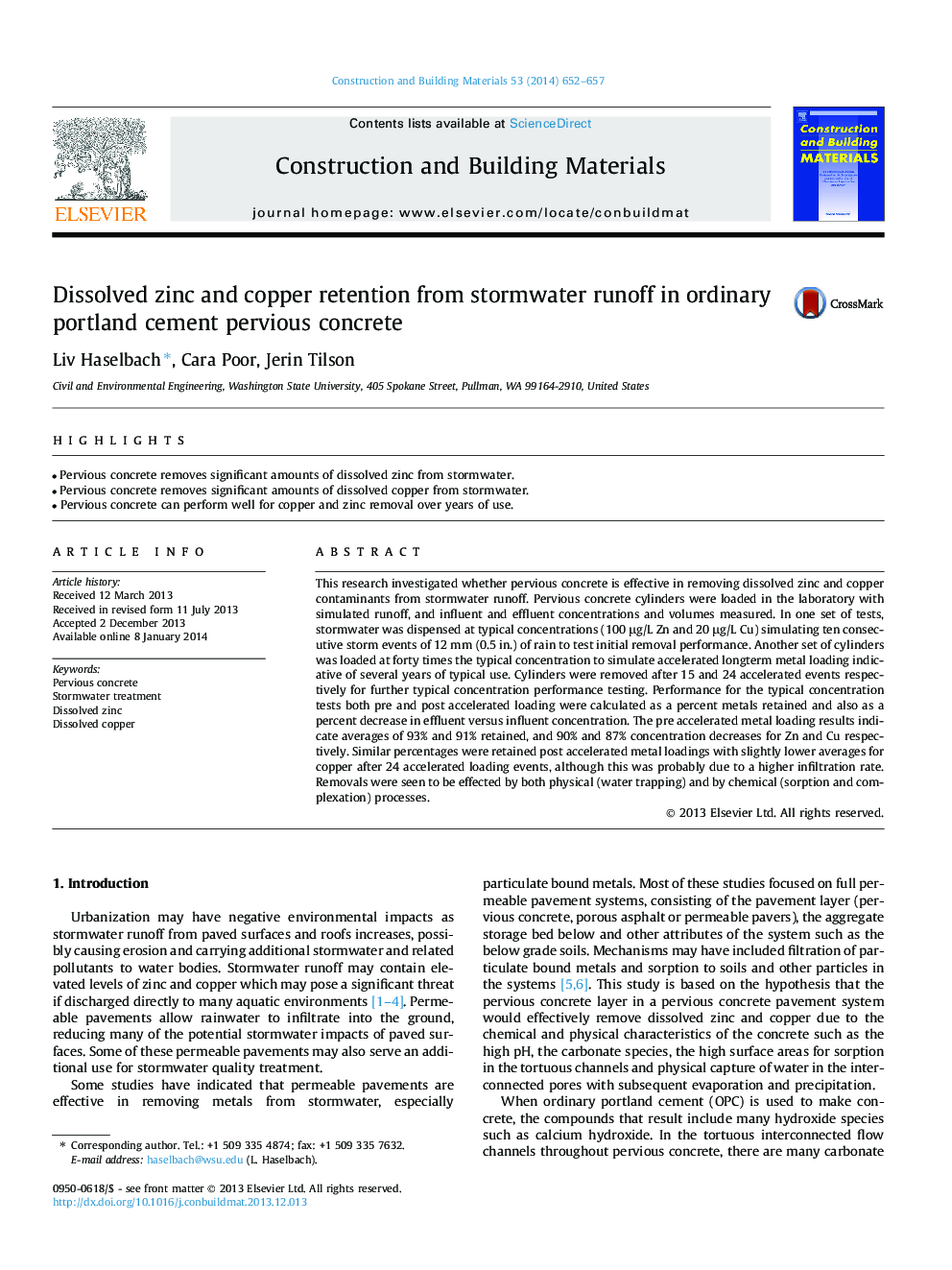| کد مقاله | کد نشریه | سال انتشار | مقاله انگلیسی | نسخه تمام متن |
|---|---|---|---|---|
| 257794 | 503600 | 2014 | 6 صفحه PDF | دانلود رایگان |
• Pervious concrete removes significant amounts of dissolved zinc from stormwater.
• Pervious concrete removes significant amounts of dissolved copper from stormwater.
• Pervious concrete can perform well for copper and zinc removal over years of use.
This research investigated whether pervious concrete is effective in removing dissolved zinc and copper contaminants from stormwater runoff. Pervious concrete cylinders were loaded in the laboratory with simulated runoff, and influent and effluent concentrations and volumes measured. In one set of tests, stormwater was dispensed at typical concentrations (100 μg/L Zn and 20 μg/L Cu) simulating ten consecutive storm events of 12 mm (0.5 in.) of rain to test initial removal performance. Another set of cylinders was loaded at forty times the typical concentration to simulate accelerated longterm metal loading indicative of several years of typical use. Cylinders were removed after 15 and 24 accelerated events respectively for further typical concentration performance testing. Performance for the typical concentration tests both pre and post accelerated loading were calculated as a percent metals retained and also as a percent decrease in effluent versus influent concentration. The pre accelerated metal loading results indicate averages of 93% and 91% retained, and 90% and 87% concentration decreases for Zn and Cu respectively. Similar percentages were retained post accelerated metal loadings with slightly lower averages for copper after 24 accelerated loading events, although this was probably due to a higher infiltration rate. Removals were seen to be effected by both physical (water trapping) and by chemical (sorption and complexation) processes.
Journal: Construction and Building Materials - Volume 53, 28 February 2014, Pages 652–657
